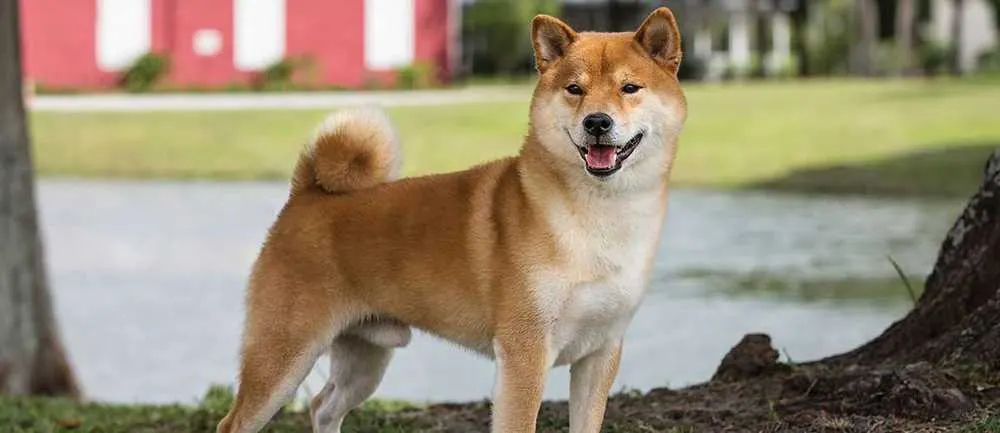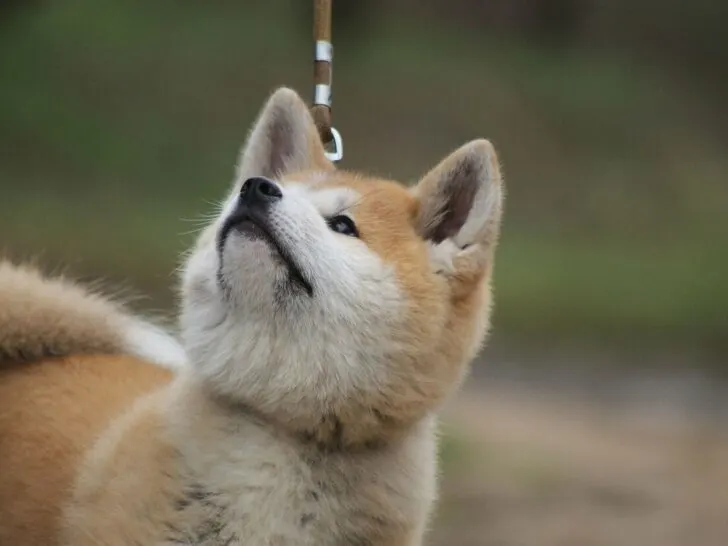Talking about pets, two animals click in our minds: dogs and cats. These both are adorable cute creatures that humans love to pet, and they fill brightness wherever they go.
When it comes to dog breeds, two Japanese breeds that stand out are the Akita Inu and the Shiba Inu. You might guess that they share a common ancestry, but these two breeds are different in several ways.
The biggest difference between the two Japanese breed dogs is their size. Male and female Akita Inu are almost twice the weight of Shibu Inu, while their heights are also so different.
This was only one difference, if you’re thinking about getting one of these breeds as a pet, it’s essential to understand all the differences between them.
In this article, along with the differences between them, we’ll explore the unique traits and characteristics of the Akita Inu and the Shiba Inu. Now, let’s begin!
Where Did They Come From?
Both the Akita Inu and Shiba Inu are native to Japan, but they have different origins.
Both Akita Inu and Shiba Inu are native Japanese breeds that were mainly bred for purpose of hunting. Later, they became petting dogs.
It’s true that both breeds are related to other, they come from the spitz dog family and they’re ancestral cousins.
The Akita Inu is a large breed that was originally bred for hunting big game such as bears and boars. It was also used for guarding royalty and nobility in Japan.
The Shiba Inu, on the other hand, is a smaller breed that was used for hunting for small animals such as birds and rabbits. It was also brought for hunting in mountainous areas.
What Are The Differences Between Them?
Appearance
One of the most obvious differences between the Akita Inu and the Shiba Inu is their size.
The Akita Inu is a large breed that can weigh up to 130 pounds, while the Shiba Inu is a smaller breed that typically weighs around 20-30 pounds. The Akita Inu has a more muscular build, while the Shiba Inu has a leaner, more agile body.
Both breeds have thick double coats, which make them well-suited for cold weather.
However, the Akita Inu’s coat is longer and softer than the Shiba Inu’s, which has a shorter and coarser coat. Both breeds come in a variety of colors, including white, black, red, and sesame.

Temperament
Another significant difference between the Akita Inu and the Shiba Inu is their temperament.
The Akita Inu is a more dominant breed, which can make them more challenging to train and socialize. They tend to be reserved with strangers and may act protective of their family.
Akitas are known for their loyalty and devotion to their owners but can be aloof with strangers.
The Shiba Inu, on the other hand, is a more independent breed that can be easier to train and socialize.
They are known for their stubbornness, but they are also loyal and affectionate with their owners. Shibas can be aloof with strangers but are generally more outgoing than Akitas.
Exercise needs
Both the Akita Inu and the Shiba Inu are active breeds that require daily exercise.
However, the Akita Inu needs more exercise than the Shiba Inu. That makes sense because Akitas are larger and more muscular, which means they have more calories to burn.
They require at least an hour of exercise every day, which can include walks, hikes, and other activities that get them moving.
Shiba Inus, on the other hand, requires about 30-45 minutes of exercise each day. They are smaller and more agile than Akitas, which means they can get enough exercise in a smaller space.
Shibas enjoy playing and running around, so they can be a good choice for people who live in apartments or smaller homes.
| Category | Akita Inu | Shiba Inu |
|---|---|---|
| Size | Large (70-130 lbs) | Small-Medium (17-23 lbs) |
| Temperament | Dominant, loyal, independent | Independent, alert, spirited |
| Socialization | Important for proper behavior | Important for proper behavior |
| Training | Challenging, and may require professional help | Easier, but still requires firm and consistent training |
| Exercise | Need at least 30-60 minutes of daily exercise | Need at least 30 minutes of daily exercise |
| Health Issues | Hip dysplasia, bloat | Allergies, hip dysplasia, patellar luxation |
| Grooming | Requires more maintenance, weekly brushing | Requires less maintenance, weekly brushing |
| Shedding | Moderate shedding throughout the year, heavy shedding twice a year | Moderate shedding throughout the year, heavy shedding twice a year |
Training
Training an Akita Inu and a Shiba Inu can be quite different.
Akitas are more dominant and can be more difficult to train. They require consistent and firm training from an experienced owner.
Positive reinforcement is key with Akitas, as they don’t respond well to harsh or negative training methods.
Shiba Inus are also stubborn but can be easier to train than Akitas. They respond well to positive reinforcement and consistency in training.
However, they can be quite independent and may require more patience from their owners.

Health
Both the Akita Inu and the Shiba Inu are generally healthy breeds with a lifespan of 10-12 years. However, they are prone to some health issues that owners should be aware of.
Akitas are prone to hip dysplasia, which is a condition where the hip joint doesn’t develop properly, causing pain and discomfort.
They are also prone to bloat, a life-threatening condition where the stomach twists on itself, cutting off blood flow and causing the dog’s organs to shut down.
Whereas, Shiba Inus are prone to allergies, which can cause itching and skin problems.
They are also prone to hip dysplasia, as well as patellar luxation, which is a condition where the kneecap dislocates from its normal position.
Grooming
Both the Akita Inu and the Shiba Inu require regular grooming to keep their coats healthy and shiny.
It takes more time and money to maintain and groom Akitas than Shiba Inus. However, that doesn’t mean that neglecting one’s needs would help.
Akitas need to be brushed at least once a week to prevent matting and tangling.
Shiba Inus also need to be brushed once a week, but both do shed heavily twice a year during shedding season. During this time, they will require more frequent brushing to remove loose fur and prevent matting.
FAQs (Frequently Asked Questions)
Which breed is better for first-time dog owners, Akita Inus or Shiba Inus?
Neither breed is recommended for first-time dog owners, as they can both be challenging to train and require experienced handlers. If you’re a first-time owner, you may want to consider a more docile and easy-going breed.
Consider buying and petting Golden Retrievers, Labradors, and Poodles that’ll make you learn a lot about petting dogs as a first-time owner (plus they radiate such a happy vibe!).
Do Akita Inus and Shiba Inus get along with other dogs?
Both breeds have a tendency to be dominant and may not get along with other dogs, especially those of the same sex. Proper socialization is essential to prevent aggression and promote positive interactions.
Are Akita Inus and Shiba Inus good with children?
Both breeds can be good with children if they are properly socialized and trained from a young age. However, they are both large, energetic dogs that can accidentally knock over or harm small children, so supervision is essential.
Conclusion
In a nutshell, while the Akita Inu and Shiba Inu share a common ancestry, they are two distinct breeds with different traits and characteristics.
Akitas are larger and more dominant, while Shiba Inus are smaller and more independent. Akitas require more exercise and grooming than Shiba Inus, and they can be more challenging to train.
When deciding which breed to get as a pet, it’s essential to consider your lifestyle, living situation, and experience with dogs. Both breeds are loving and loyal companions that can make great pets for the right owner.
However, they do require a significant commitment of time, effort, and resources to keep them healthy and happy.
Ultimately, the decision to get an Akita Inu or a Shiba Inu should be based on careful research and consideration of the breed’s unique traits and characteristics. With proper training, exercise, and care, both breeds can make wonderful and loyal companions for years to come.

